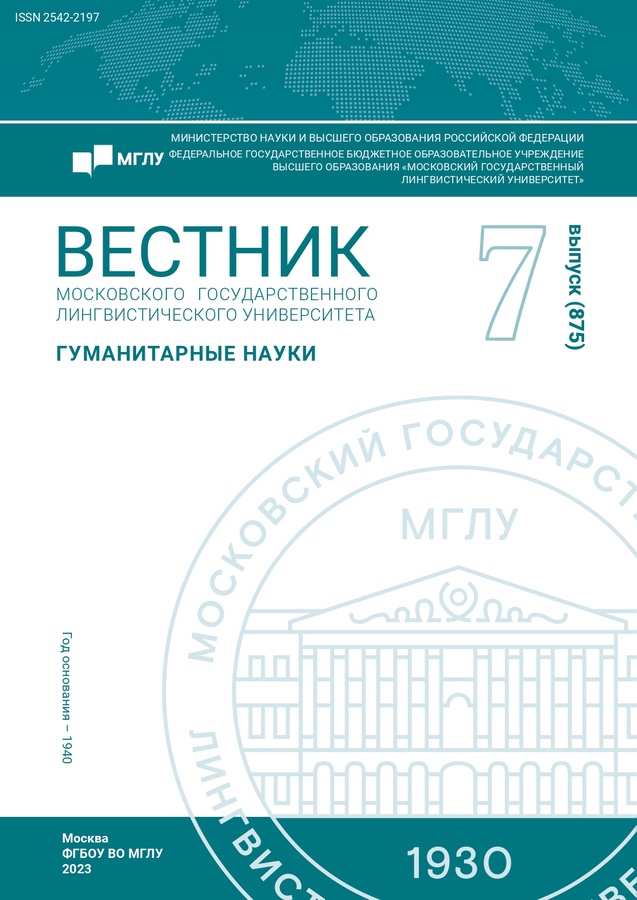Development of Semantics in English and Spanish “Crying” Verbs
- Autores: Guseva O.A.1, Popova E.A.1
-
Afiliações:
- Moscow State Linguistic University
- Edição: Nº 7(875) (2023)
- Páginas: 40-47
- Seção: Linguistics
- URL: https://journal-vniispk.ru/2542-2197/article/view/350583
- ID: 350583
Citar
Texto integral
Resumo
The article deals with the development of semantics of frequent “crying” verbs in English and Spanish based on etymological, ideographic and explanatory dictionaries. It focuses on the conceptual components that represent crying as an expression of sad emotions (presence / absence of tears, intensity and duration of the sound, etc.). The article considers, on the one hand, a large number of similar features and identical main components inherent in the analyzed verbs, and on the other - close connection of the ideas of crying and screaming in the English verbs, absent in Spanish ones.
Palavras-chave
Sobre autores
Olga Guseva
Moscow State Linguistic University
Autor responsável pela correspondência
Email: gouseva_olga80@mail.ru
PhD (Philology), Assistant Professor at the Department of English Lexicology, Faculty of the English Language, M. Thorez Institute of Foreign Languages, Moscow State Linguistic University
RússiaEvgeniya Popova
Moscow State Linguistic University
Email: ogenia@yandex.ru
PhD (Philology), Assistant Professor at the Department of Rare Languages Teaching Methodology, M. Thorez Institute of Foreign Languages, Moscow State Linguistic University
RússiaBibliografia
- Rotova, M. S. (2009). The Expressions of Weeping in Modern Russian Language. Voronezh State University of Architecture and Civil Engineering. Linguistics and Intercultural Communication, 5(5), 43–46. (In Russ.)
- Crónica incompleta de los Reyes Católicos (1934). Madrid: Tipología de Archivos.
- Corominas J., Pascual J. A. (1991–1997). Diccionario Crítico Etimológico Castellano e Hispanico. Madrid: Graficas Condor, S.A., Sanchez Pachecho.
Arquivos suplementares










